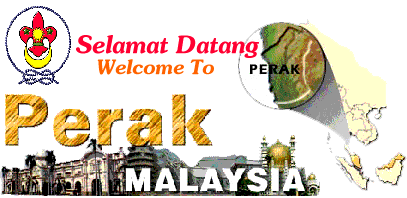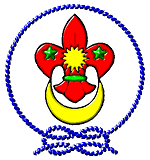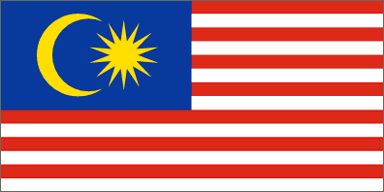



|
The Perak State, in actual fact, has been in existence since the prehistoric age. Kota Tampan in Lenggong is the one and only proof that the Palaeolithic Age existed in Malaya. The Perak State went through numerous evolutions between 400 000 BC and 8000 BC. The state had experienced the Hoabinhian Era and the Neolithic Age as well as the Metal Age, which was proven with the findings of relevant ancient artifacts. Then came the Hindu/Buddha era. It was thought to have occured simultaneously with the rest of Malaya. After this period, the history of the state advanced a step further with the formation of minor territories such as Manjung in the Dinding District and Beruas which came into existence after Manjung ceased to exist. This also apply to a few other territories in the Perak Tengah and Hulu Perak. It was also then that Islam began to plant its roots firmly in the state. Historically Perak's history actually began with the installation of Sultan Muzaffar Shah 1, who was a descendent of Sultan Mahmud Shah of Malacca, in the year 1528. Although the Perak Sultanate had formed the territorial powers were still in effect. The administrative method was an extension of the democratic feudal system of Malacca. Perak became more prominent with the discovery of tin in Larut, Taiping in 1848 by Long Jaafar. With this discovery, Perak's economy boomed and more mining areas were brought into existence. In addition to tin ore, natural rubber also played an important role and is still being planted after the reign of 33 or 34 consecutive Sultans. Due to this significant implication of economic development resulted in the birth of a multiracial society especially with the introduction of the Chinese into the mining area. The British who had long been interested Perak, intervened through the Pangkor Treaty in 1874 after a riot in Larut. As a result of this intervention, the Residential system was introduced with James W.W Birch as its first Resident. Initially, the Residential system was supposed to yield positive results. However, because it deviated from its original cause, compled with the natives' refused to be colonized led to an uprising against the Resident under the leadership of Datuk Maharaja Lela. As a result J.W.W Birch was assassinated in 1875. The Residential system continued until the arrival of the Japanese to Malaya in 1941. The Perak State also suffered, as did others, during the Japanese occupation of Malaya until the year 1945. Even after the Japanese surrendered, the British still colonized Malaya until the year 1948. Violence was rampant then in Perak, due to Communist terrorism. After the Japanese occupation in Malaya, the Malay States were not stable. The British did their utmost best to maintain their position by introducing new administration systems such as the Malayan Union in 1946, despite the people's nasionalistic spirit to seek independence. The people of Malaya combined their efforts with all state dignitaries to fully rebel against all British systems. They continuesly oppressed until the British granted Malaya independence in 1957. The independence of Malaya meant the freedom for all its Federated States, which Perak was a part of. Rapid development in all fields continued until today, after the reign of 34 consecutive Sultans. | |
|
Prehistoric Age
Perak's prehistoric Era is divided into four parts in all; the Palaeolithic Age, the Hoabinhian, the Neolithic Age and the Metal Age.
The Palaeolithic Age
This was estimated to have occured between 400,000 and 8,000 BC. The one and only proof of its existence in Malaya is the site found in Kota Tampan, Lenggong. The remains of this age is known to be of the Tampan culture, comprising artifacts made of rocks that had not been perfected.
The Hoabinhian This era was estimated to have occurred between 8,000 and 2,000 BC. Its remains were discovered in Gua Badak (Badak Cave), Lenggong, Gunung Pondok (Mount Pondok), Padang Rengas and in a few other caves in Perak. Among the finer looking artifacts were a mortar and pestle used in the making of haematite.
Neolithic Age The era before the Sultanate of Perak and the Arrival of Islam The Goverment of Manjung is considered to be the oldest goverment in Perak. After it had ceased to exist, the Malay goverment of Beruas emerged in the early 15th century.From the evidence found on tombstones, it was decided that an Islamic goverment did indeed exist and it was believed that Islam came to Perak via coastal states such as Malacca and those in the East Coast. The influence of Islam spread until it reached the interior of Perak through the Perak River. Appart from the Beruas goverment, existed powers of local dignitaries in Ulu Perak such as Roman, Tun Saban, To' Temong as well as other goverments that have yet to be discovered.
The Sultanate Era
The history of Perak reached its peak of glory after the sultanate system ruled over an area of 8,110 - sq. miles. The installation of Sultan Muzaffar Shah 1 in 1528 opened a new chapter towards Perak's History.
The discovery of tin ore by Long Jaafar in Larut in 1824 had further hastened further Perak's development process. With the British entry in 1824, came the introduction of rubber as a new source of economic income. As a result, a great number of immigrants, especially the Chinese and Indians, migrated to this state.
From the two economic recources above, together with its traditional recources mentioned Perak developed rapidly under the reign of 33 or 34 Sultans until today.
Air Mati, Lambor Kanan, Parit.
(The sketch was done using haematite).
| |||||||
|
The Metal Age This age occured between 500 to 200 years BC. Places discovered such as Changkat Menteri, Sungkai and Slim River have indicated that the people had used metals such as bronze and iron to make spearheads, fishing hooks and arrowheads. A strouge shaped instrument made from iron known as, "Tulang Mawas" was also discovered buried in the Batu Ubin grave.
The Hindu/Buddha Age
Discoveries in Kuala Selensing, Perak was considered to be of an Intermediate era before the Hindu/Buddha Age. The Hindu/Buddha Age, on the other hand, was considered to be the opening chapter in Perak's history. The influence of the Indian culture and Hindu beliefs in this region since the beginning of AD itself had totally changed the society value system of the people of Malaya. Hindu/Buddha statues and the other devices used in worshipping ceremonies discovered in Bidor, Jalong and Pengkalan Pegoh provend that the Hindu/Buddha influence did indeed exist.
With the signing of the Pangkor Treaty on 20 January 1874 between the British and the Perak Malay Dignitaries, British power was ecknowledged in Perak, specifically and in the Malay States generally. There are a few factors which cause this intervention, amongst which are; the natural wealth of Perak's soil, friction among the Malay dignitaries for power and riots which broke loose among the Chinese tribes.
Through this intervention, the British introduced the Residential System which was an improvement of the governing system of the traditional years.
| |||
|
1.) Raja Abdullah was acknowledged as the legitimate Sultan to replace Sultan Ismail who would be given a title and a penchant of $1000 a month.
2.) The Sultan will receive a British Resident whose advice had to be sought and adhered to in all matters except those pertaining to the religion and customs of the Malays.
3.) All collections and control of taxes as well as the administration of the state had to be done under the name of the Sultan but arranged according to the Resident's advice.
4.)The Minister of Larut would continue to be in control, but would no longer be recognized as a liberated leader. Instead, a British Officer, who would have a vast authority in administrating the district, would be appointed in Larut.
5.) The Sultan and not the British goverment would pay the Resident's salary.
The Revolt against the British Administration
The Residential system was not an improvement to the traditional system. In fact, it was considered to be an oppressive system. This is because the British seemed to benefit more from the system. Moreover, there was abuse of power during its implementation by the first Resident, J.W.W Birch. As a result, the natives were dissatisfied and they rose in rebellion against the British. Finally, J.W.W Birch was assassinated in the year 1875. However, the system continued until the Japanese began its occupation in Malaya.
The Resident Administration System
The resident system, which was introduced via the Western goverment, which was said to be more modern, was found to be the exact opposite of the traditional Malay goverment. The Sultan and dignitaries no longer functioned as absolute rulers except only in matters pertaining to religion and the Malay customs and tradition. Due to this, there had been numerous oppositions against the system but it continued anyway until the Japanese occupation.
World War I - "The Age of Decline"
Although the 1st World War broke out in Europe, the rest of the world felt its heat too. Perak was indirectly involved through its international trade of tin ore and natural rubber exports. The State suffered serious deterioration in its income. The implication of this was that development had to be put on hold until peace was restored in the world.As a result all development were forced to a stand still until peace and order were returned to the world.
World War II
The heat of the second World War was also felt by Malaya on 8 December 1941 with the arrival of Japanese troops in Kota Bharu.
Perak fell into the hands of the Japanese on 1 January 1942. The bitter warstrikened life endured by the people of the Japanese occupation until the year 1945.
| |||
|
Emergency
The whole nation was declared to be in a state of emergency on 1 February 1948 when the country's peace was threatened by guerillas of the Communist Party of Malaya. They rose in rebellion against the British administration because it failed to make Malaya a Constitutional Communist Republic.
Nationalism
Thanks to the introduction of modern education, the Malay radicals were aware of the concept of independence.
This elite group in their effort to bring this awarness to the people channeled the campaign via several political and social organizations. Perak also contributed to the country's list of national heroes through Sultan Idris, Ibrahim Yaakob, Dr. Burhanuddin, Zulkifli Mohammad, and Ustaz Abu Bakar among others.
Towards Independence The British administration systems only served to boost the people's nationalist's spirit. This burning was further enhanced by the Japanese advocacy of Asian spirit. Perak should be proud of its heroes' contribution right up to the point taken the country received its independence on 31 August 1957.
Economic Development
The discovery of tin and introduction of rubber had introduced Perak to the rest of the world in the early 19th century. The production technique achieved in these two industries had helped boost its economy rapidly. This was followed by the expansion of the production areas, which in the end resulted in the birth of new towns.
Social Development The economic development achieved had exposed Perak to the international trade. Traditional systems of communication, health, education and traditional arts became obsolete. More medern communication systems such as roads and trains were introduced by the end of the 19th century. Along with this, schools, health centres and security teams were established. In such a short time people of Perak went through a major social development.
| ||||||
